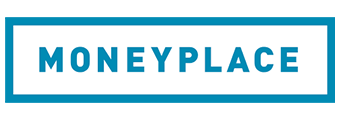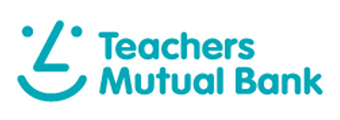What is conditional approval?
Conditional approval - also called pre-approval - is an indication from a lender that you are able to borrow a specified amount. It usually requires the basics - an income declaration, and a rundown of expenses, liabilities and assets, plus identification. It’s also useful looking at a car loan calculator to determine if the repayments can fit with your household budget.
Pre-approval is not set-in-stone, however it usually gives you more confidence to shop for a new (or new-to-you) vehicle with a strict budget. This can help avoid the temptation of shopping around for a much more expensive vehicle, or be tempted by dealership tactics to opt for a higher model or get a car with a bunch of costly options.
Pre-approval is usually granted early in the car buying process. After you’ve found a vehicle, you will need to speak with your lender again to supply more documentation for unconditional approval. If it all checks out, the lender will settle it with the car vendor, and you can drive off with your new set of wheels.
How long does car loan pre-approval last?
Car loan pre-approval can vary wildly from lender to lender. It typically lasts from 30 to 60 days, or one to two months. This is unlike home loan pre-approval which is pretty uniformly 90 days. This means you’ll need to proverbially get your skates on if you want to purchase a vehicle.
After you’ve been pre-approved, you’ll have one or two months to find a car in budget, talk with the vendor or dealership, and get the car narrowed down/secure the car with a small deposit. This can be made harder if your pre-approved loan amount is less than you anticipated, thus knocking out some vehicles you had in mind.
Benefits of car loan pre-approval
Shop with a budget in-mind
It’s no use shopping with champagne tastes on a beer budget. It’s very easy to get caught up in flashy vehicles, but if you can’t get a loan for it, then forget it. This also makes your life easier by narrowing down a list of dealers, or on online car sales websites, to target.
Not tempted to go over-budget
Dealership tactics can push you into getting a higher trim model, optional extras, or even a totally different vehicle. By knowing in the back of your head you have a hard-line budget of say $50,000, you can shop with confidence.
Negotiating power
Pre-approval also gives you negotiating power. Say a car has a driveaway price of $32,000 but you have only $30,000 pre-approved, you could negotiate hard on the dealer to reduce it to $30,000. This might be more likely at the end of a quarter or financial year, or at a model runout sale when the dealer is trying to hit their sales targets. Be prepared to walk away - there are plenty of vehicles out there.
What to consider with car loan pre-approval
Not set in stone
Pre-approval is also called conditional approval. The amount is approved on the condition that your circumstances are the same as when you applied. As such, pre-approval is not a guarantee, and when you apply for unconditional approval, it could be different than what you’d hoped.
Short period
Pre-approval usually only lasts for 30 or 60 days depending on lender. This is roughly four to eight weekends to basically nail-down a vehicle in the car yards or through private sellers, and head back to your lender.
As mentioned earlier, pre-approval is usually pretty early on in the overall car buying process, but you should still have the type of vehicle you want in mind and a grasp on the state of your finances first.
Steps to getting pre-approved for a car loan
- Have a car in-mind: It’s no use flying blind. Have an idea of the car you want e.g. a Toyota Hilux or Ford Ranger, and a loose idea of the driveaway price.
- Get your documents ready: This might vary between lenders, but generally for pre-approval you will need ID, a couple of payslips and a bank statement.
- Apply for pre-approval: These days this is usually done online via a lender’s pre-approval page, and involves a short questionnaire and the opportunity to supply your documents.
- Hit the showroom floor: With the more savvy lenders, pre-approval can take as little as a few minutes. After that, you can shop around with confidence and get a better idea of what you can afford.
After that comes unconditional approval, which involves supplying more financial documentation, and can take a few days.
What to do if your pre-approval is less than you imagined
1. Get your finances in order
The lender might have determined your financial history is not good enough for the level at which you want to borrow. In this case, you might need to supply more documentation, have someone co-sign the loan for you (such as a partner), or improve your credit history by paying off other loans first or reducing your credit card borrowing limit.
2. Adjust your tastes and expectations
It’s no use shopping for Ferraris on a Corolla budget. If you had big ideas of being a big baller with a BMW and can only afford a Honda, you might be in for a reality check. While these are extreme examples, you might need to compromise on trim levels or optional extras to afford a car that’s to your tastes and budget.
3. Put together a deposit
If you have some cash lying around, you could put it towards a deposit on your car loan. This has two effects: It might get you over the line and into the wheels of your dreams; and it demonstrates to the lender you’re a prudent customer. Further, a deposit will increase your ‘skin in the game’. Due to car loans' amortisation schedule, more interest is paid at the start than principal. By having $5,000, $10,000 or more in principal at the start, that can reduce total interest payable and reduce the chance of negative equity.
4. Try a different lender
Certain lenders might be more generous than others when it comes to loan amounts, including some lenders that cater towards those with bad credit history. However keep in mind the interest rates could be higher, the payment terms more restrictive, and you might have a different set of fees; no two lenders are the same.
Further, pre-approvals likely count as a ‘hard’ credit enquiry on your credit file. One or two enquiries on your report might not matter too much, but a handful signifies you are getting knocked back a lot and might give pause to another lender dishing out money, and consequently hurt your credit score.
Should you be tempted to borrow the full pre-approval amount?
Just because a lender might pre-approve an amount of say $60,000 doesn’t mean you need to use it all up. You might be tempted to add on optional extras and other items to borrow at full capacity. However, you will need to consider how that loan amount will work into your budget.
If you’re opting for a variable-rate car loan, you will also need to budget for the fact that interest rates could go higher.
Reasons why unconditional approval might fall over after pre-approval
- Vehicle is a lot different or more expensive: You might be pre-approved for $30,000, but end up wanting to settle a $40,000 loan, which could be no-bueno. Many lenders also have restrictions on used car ages. If you pick a car with a secured car loan that is too old, you might be knocked back.
- Your financial circumstances change: Certain circumstances can drastically affect your ability to repay the loan, including having a baby, buying a home, taking on other debt, divorce, starting a uni degree, or other income-limiting ventures.
- Higher interest rates affect your borrowing power: Rapid increases in interest rates can affect your borrowing power between when you got pre-approved as opposed to the time you apply for unconditional approval.




















